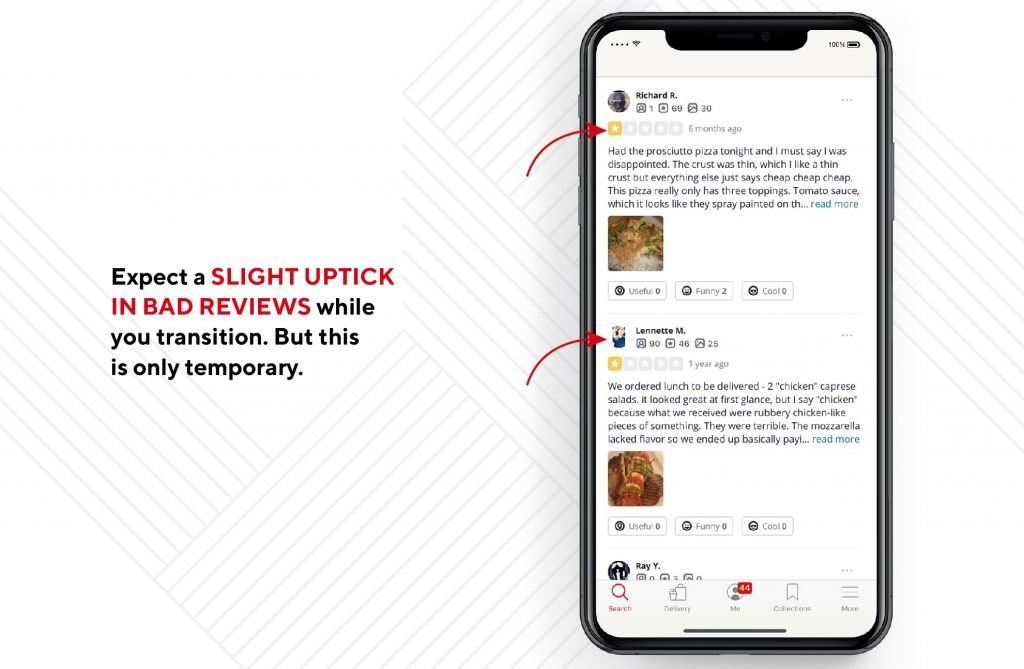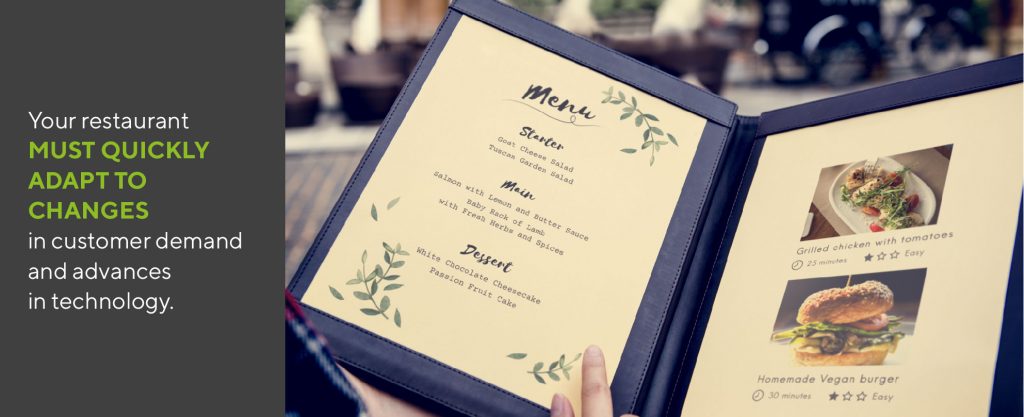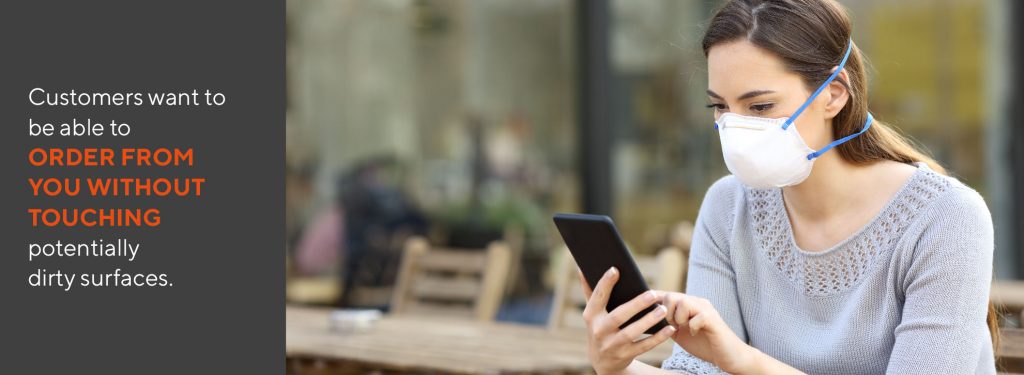
5 Must Know Restaurant Management Skills for COVID-1916 min read
In today’s post, we’re tackling a troubling topic: how do you manage your restaurant while trying to navigate the many twists and turns presented by the COVID pandemic? There are five core principles that, once you master them, will help you do just that. Then we’ll turn our attention to specific changes you can implement in your restaurant to make you more agile. These changes will not only help with COVID, they’ll also help you navigate whatever crisis tomorrow has in store.
Ready? Let’s get started.
In The News…
But first, let’s look at the news. Researchers have recently discovered that COVID most likely crossed over to humans from a species of bat. According to the journal Nature Microbiology, the evolutionary history of the virus when compared to other SARS-CoV-2 viruses indicates that this is most likely the case. This discovery is important as it could squash troublesome—and flat out wrong—conspiracy theories that claim that the virus was man-made.
The study suggests that prior to humans, this particular virus only effected bats. This would mean that, most likely, a bat at some point bit a human. At that time, the virus mutated and gained the ability to infect us. It’s also possible that the pangolin, a popular pet in China, may have acted as an intermediary. But the evidence for this remains weak.
World-wide, global cases of COVID-19 have surpassed 30-million. The U.S., Brazil and India together make up the most infected. In fact, these three countries amount to more than half of worldwide cases. Meanwhile, the U.S. death toll is nearly 200,000. Even so, college students in some areas are going back to school, and there are other indications that things may return to normal soon.
As always, we eagerly await news of a working vaccine. With today’s updates out of the way, let’s get to the meat of today’s post.
5 Restaurant Management Strategies for COVID
In this section, you’ll discover five powerful ways that you can manage your restaurant during COVID-19. With these strategies in place, your restaurant stands a good chance of making it out the other side.
#1 Deal with Difficult Customers
Imagine the following scenario.
A customer asks one of your servers if she can look at your kitchen. She explains that she wants to observe your sanitation process. Instead, your server patiently describes this new sanitation process, from start to finish. At the end of this exchange, the customer demands that her table be scoured with just about every cleaning agent you have on hand. Your employee does so with a nod and a smile
The smile is a bit strained, and your patience is a bit frayed.
But this scenario is reported constantly by restaurant owners around the world. In some instances, the customer even demands that boiling water be brought to their table so they can sanitize their own silverware. This is, obviously, a terrible idea—and under no circumstances should you agree to do this. Even if the customer doesn’t horribly scald themselves, leaving you open to a potential lawsuit, letting them play with boiling water sets a bad precedent.
Yet these are our customers. They’re reacting to a real threat to their welfare, and we need them. So, what to do?
We should be grateful that our customers are coming back to us. But the thing is, dining out has changed. Customers view the restaurant experience differently these days. Do the following to thrive during the COVID crisis.
Be prepared to answer questions.
While it may not be practical to show every customer your new kitchen sanitation procedure, you should be prepared to answer detailed questions about how you plan to keep them safe.
Let staff know that tips may be lower than usual.
Consumers are getting back into the swing of things; give them time. Plus, there are still concerns about the state of the economy.
Creating a memorable experience may get harder.
Right now, people are more concerned about safety than they are about showmanship. So if you normally incorporate an element of flash into your dining experience, you may want to temporarily focus instead on sanitation and safety.
You can’t cave to all customer demands.
You don’t have time to honor each customer request to see your kitchen. Instead, get creative. Create a high-quality video of your new kitchen sanitation procedure and publish it on YouTube. When a customer demands to see your kitchen, share this video with them. Use a URL shortener to make the web address more accessible. You can even use an app to create a QR code that loads your video on any mobile device.
Know what to do when a customer oversteps their boundaries.
If a customer won’t give you their business unless you bend over backwards for them, consider politely asking them to leave. You need their business, but they’re making a scene. Keep your other guests in mind. Remember: your regulars are the backbone of your business.
#2 Care for Your Employees
You’ve no doubt noticed that finding and retaining skilled staff is no walk in the park. At minimum, you need employees who are:
-
Self-motivated
-
Talented
-
Meticulous
-
Loyal
But even in good times, those employees can be hard to find. Worse, many employees are reentering the workforce after having been laid off by other establishments. They may be:
-
Struggling to catch up on past due bills
-
Facing mounting medical expenses
-
Coping with a spouse who has also been out of work
-
Facing potential eviction
-
Having to apply for food stamps or other forms of aid for the first time
As entrepreneurs in the restaurant space, one of our priorities is to create a relaxing, stress-free dining environment for our guests. But that’s hard to do when our employees are stressed out. It would be ideal if we could ask staff to leave their worries at home. It would be great if our employees could wear a genuine smile throughout their entire shift. But right now, that may be a lot to expect. The entire world is worried about COVID-19, and that includes our people.
The goal is to protect your business while exuding understanding, confidence and compassion.
Keep a gentle eye on staff and their mental state. If you suspect an employee may break down, usher them politely to the back room. Don’t allow employees to break down in front of customers. What’s more, you should always actively listen to staff. If multiple employees are raising the same issue, it is probably a valid concern. At the very least, investigate the matter yourself.
Remember, a supported staff member will be a loyal staff member. If multiple established employees have an issue with a new employee, address the issue promptly. Avoid showing favoritism if you can, but don’t ignore the fact that your established employees have demonstrated loyalty to you by staying with you as long as they have.
Finally, keep in mind that stressed employees make risky decisions. This includes coming to work when they should really stay home, such as when they’re feeling feverish. Make it clear to your staff that they should not come to work if they have symptoms of COVID-19.
#3 Navigate Negative Reviews with Finesse
One of the most frustrating experiences reported by restaurant owners recently is an influx of negative reviews. Usually, these reviews come in while the restaurant is adjusting to the COVID situation. Often, these reviews are unfair. For instance, a restaurant owner may get a three star review or lower even though they provided stellar service and food. But the reviewer was unhappy about a single aspect of the restaurant’s sanitation procedure.

Remember: patrons are very sensitive to your attempts to address the COVID-19 situation, and this isn’t a bad thing.
If you keep your quality level high and make your sanitation efforts transparent, then that negative review will probably be counteracted by a positive one. Respond to negative reviews with compassion and in a professional tone. If the poster is petty or vindictive, don’t stoop to their level. Doing so will only make matters worse for you. Make it clear to posters what steps you are taking to ensure their safety.
If you are facing any COVID-19 challenges, it’s okay to let your customers know. This is best done on your blog, but you can mention them in replies to reviews if it’s directly relevant. But always focus on the steps you’re taking to overcome these challenges.
Always, always, always be transparent. Make it clear to customers what steps you’re taking to safeguard their wellbeing.
Here’s how to handle a bad review wherein the customer has raised a valid concern:
-
Let the customer know you value their feedback
-
Admit that the issue is being addressed
-
Tell them how you plan to move forward
-
Thank them again for their feedback, time and patronage
#4 Make Smart Decisions
New rules that limit seating capacity come with a host of complex decisions to make. If you seek to maximize table-turn efficiency, you may risk alienating your guests. Doesn’t seem very fair, does it? Yet that’s the nature of the beast. The more money you want to make, the more careful you must be.
But complex decisions like these are essential right now. The key is to think things through without freezing. You see, if you over think, you’ll suffer from analysis paralysis, and that doesn’t serve you either. One thing you can do to minimize the damage is to deal with small issues as soon as they arise. Don’t let these small fires meet up to form a giant blaze.
#5 Stay Vigilant
Always remember that you’re in it for the long run. Don’t get complacent; don’t get comfortable. In any business, you must remain agile. Paradoxically, this means following any regulations imposed on you by your city, state and/or country. It also means being a master of your zone of control. For instance, let’s assume that your city only allows you to serve mask wearers. Obviously, then, it doesn’t benefit you in the long run to let customers in who won’t wear masks.

This might earn you some extra revenue in the short term, but your other customers will pick up on the fact that you’re not following city ordinances. In the end, you’ll get attention on social media or even the local paper—and not the kind of attention you want. So remaining agile in the long run, in this case, means adhering to a few temporary limitations. Similarly, be wary of managers within your organization who bend the rules when you’re not there. They may do this for a number of reasons:
-
To make themselves look better than other managers
-
To increase your revenue, thereby securing their own job
-
To help ensure your restaurant survives
While this kind of ‘help’ may well add to your bottom line short term, it could cost you big. Remember: being a restaurant owner is your dream, not your manager’s. Moreover, by following local ordinances, you’re demonstrating to the community that you’re an entity that’s worthy of your place in the community.
Changes To Consider Making
In our final section for today, we’ll look at six practical changes you can implement right now to protect yourself from COVID. In so doing, you not only safeguard your existing operation, you safeguard your future. Let’s get to it.
#1 Takeout Jujitsu
It’s no secret that takeout is becoming more important than ever before. The reality is customers are leery about spending a lot of time in public places. This is for good reason. After all, as we’ve covered in this blog, the virus is transmitted most efficiently indoors. This is because indoors, where air circulation is poor, mucus droplets can remain suspended in air for several minutes at a time.
But if you’re one of the many restaurants for whom takeout is a strange idea, you may need to change your tune. For instance, if you’re a fine dining establishment, the idea of takeout may be foreign to you—maybe even scary. Many fine dining restaurant owners are leery about takeout because:
-
They fear that food quality can’t be maintained
-
They worry that food will become cold
-
They worry that the presentation will suffer
These are valid concerns.
As you know, the more you charge for your dish, the more important presentation becomes. But according to Michael Mina, founder of MINA Group, fine dining takeout is not only possible, it’s essential in today’s environment. According to Mina, the key is to analyze each high end dish you wish to sell.
The main thing you want to know is how far—in miles or kilometers, whichever is more applicable to you—each dish can travel without suffering too much. Then add those values together and divide by the number of dishes. This gives you an average. This is your takeout and/or delivery range. Clearly, if you exceed this range, food will become cold, stale and presentation will suffer.
If you just want to offer takeout, let those customers know that if they’re traveling with your food beyond that range, food quality may suffer. If you let them know this ahead of time, you can avoid bad reviews.
It’s logical then, too, to limit your takeout menu to those dishes that travel well. In other words, if you find that a dish just doesn’t do well on the move, don’t put it on your takeout menu.
#2 Menu Flexibility

We’ve touched on this before, but it bears repeating. If you have expensive dishes that don’t bring in a lot of revenue, you should consider dropping them. They take up space on your menu, and you’re in crisis mode. Plus, right now, you might run into problems with ingredient availability or supply. It’s important to have a good, modern POS system so that you can easily change your menu. Then you can easily push those changes to the mobile devices that display them. You are using a modern POS that allows you to take advantage of tablets, right?If you’re like many restaurants these days, you’re offering grocery items or meal kits. If you use an older POS system, getting these items into your system can be a real chore, if not outright impossible. A modern POS makes this much easier. And if you use a digital solution—like a mobile device—you’ll find it much easier to update your menu on the fly.
By the way, if you do offer grocery items, meal kits or whole foods, make sure to check your sales data each day. If something isn’t selling, you must ask yourself if it justifies its place on your menu. Today’s menu tends to be smaller. Every item must pull its own weight.
#3 Go Touchless
More and more customers are coming back to dine-in. But at the same time, they’ve begun to demand a touchless experience. Because, of course, touchless ordering and/or paying allows them to avoid contact with germs. If at all possible, upgrade your ordering process so that the only thing the cu
stomer has to touch is their own mobile device.

If this is the only thing that separates you from your closest competition, you’ll come out on top.
A self-serve kiosk can be an acceptable option, too. Some restaurants, like McDonald’s, started experimenting with these many years ago. Today’s kiosks can be cleaned frequently by staff without taking damage. So make sure to set up a sanitation schedule, and don’t be shy about it. Let customers see your staff spraying those displays down every hour or so.
#4 Fine Tune Your Operation
The deciding factor between success and failure is operational efficiency. That’s it. In the end, your labor, table turnover rate and other factors all come down to your efficiency. In ideal times, you might worry primarily about maintaining food quality and staff professionalism. But in times like these, you have many other variables to consider. Operational efficiency becomes hard to manage, and you become stressed or dejected. We’ve been there.
For help, turn to your technology partners.
Ask everyone from your POS supplier to your kitchen equipment suppliers for help. They may have ideas on how to make your process more efficient. Often, they can provide you with insights you wouldn’t have thought of yourself. After all, you’re stressed, busy and worried about the future. But remember, your success is their success. If they can help you, they will.
#5 Get the Timing Right
Across the U.S., each state has its own idea on how and when to allow restaurants to reopen. In fact, this can vary from city to city. It’s frustrating. How do you know when you can fully reopen? What if you reopen only to have to partially close again? Worse, just because your state tells you can reopen, that doesn’t mean that should right now.
In California, restaurants could have reopened as early as April, but since hindsight is 20/20, we can say that doing so would have been a mistake. Businesses that reopened too soon risked wasting valuable resources. The result? A higher energy bill and food waste.

What’s the solution?
The staggered opening. Some businesses in the state, such as Everyday California, opened in phases. They opened their ocean adventure tours but kept some arms of their business dormant. This not only saved them some money, but it allowed them to stop hemorrhaging. The company started by offering curbside service only. This play it by ear mentality can pay off big in uncertain times.
#6 Review Your Sick Leave Policies
Being forced to close for months at a time is bad enough. But what happens when you reopen? You face new expenses such as sanitation supplies, masks, sneeze barriers and thermometers. These aren’t normal expenses, and you may not have budgeted for them. Things get even more complicated if your employees start getting sick. Not only can this set customers on edge, it can cause the virus to spread throughout your organization.
The solution?
Update your sick leave policy to allow those who can work from home to do so. Usually, this is junior managers and up. But every bit helps. You need to keep your management safe and healthy, after all. But also consider offering special provisions for COVID-19 in general, such as protected sick leave. Whatever you decide, make sure you update your employee handbook too.
We hope this post has been helpful! If it has, can you give it a share? We would really appreciate it!
Take a screen shot of Yelp reviews of a particular restaurant with a red arrow drawn to bad feedback.



